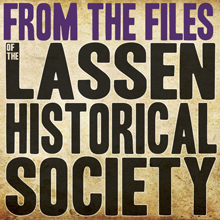
Here in Lassen County, many of the tales of our early emigrants have been told. But much less has been written about those men who came here for a better life and were placed in the middle of the wilderness to work alone. These are the Basque sheepherders.
The Basque or Euskaldunak are from the Pyrenees Mountains which straddle the boundary between Spain and France. Due to political turmoil in the 1830’s, many came to this country to attempt to find a better life, and many more came as news of the discovery of gold in California swept throughout the world.
Due to the custom of primogeniture, many Basque men were looking to find their fortune in a new land.
Work for these new emigrants was often difficult, and gold mining was even more so. They soon learned that there was money to be made in the sheep industry. For the inexperienced new arrivals, it was a much more lucrative job than most.
But it was a lonely job. Months alone, watching sheep wander the mountains and desert in Lassen County was not easy.
These men were in a new environment, with new customs, new predators and new species of plants. And their job was an important one. The loss of sheep meant the loss of money, and it was their responsibility to secure the safety of the flock.
But, imagine the sheepherder sitting in camp all alone, thinking of life as he wished it to be. Perhaps memories of home or dreams of becoming wealthy. No one to talk to. No news. Just his dog, the sheep, and the trees. And the trees became his connection to the outside world.
Sometimes the messages were to communicate with other herders as they passed through. Sometimes the arborglyphs, or tree carvings, were simply decorative. But for whatever reason, these stories in the trees show that someone had been there.
Aspen trees were the favorite medium for arborglyphs. The soft white bark was easily engraved and as dark scars formed around the wounds, the marks were easily read. But the scars continue to grow, and over time, the writing often becomes unreadable.
Aspen trees live, on average, between 60 to 100 years, so finding older writings are very rare. Most arborglyphs are a simple record, showing the name and date, but some are much more elaborate.
Often written in Euskara, the Basque language, and sometimes written in phonetic English, Spanish or French, some words are difficult to decipher, but these communications from the past still tell many stories of young lonely men and their dreams.
Of course not all tree carvings are Basque. Many emigrants have left their mark on trees as they passed through our area, and many people still leave their messages today. But there is just something about those young sheepherders, long ago dreaming of happiness, that reminds us that some dreams do come true.






